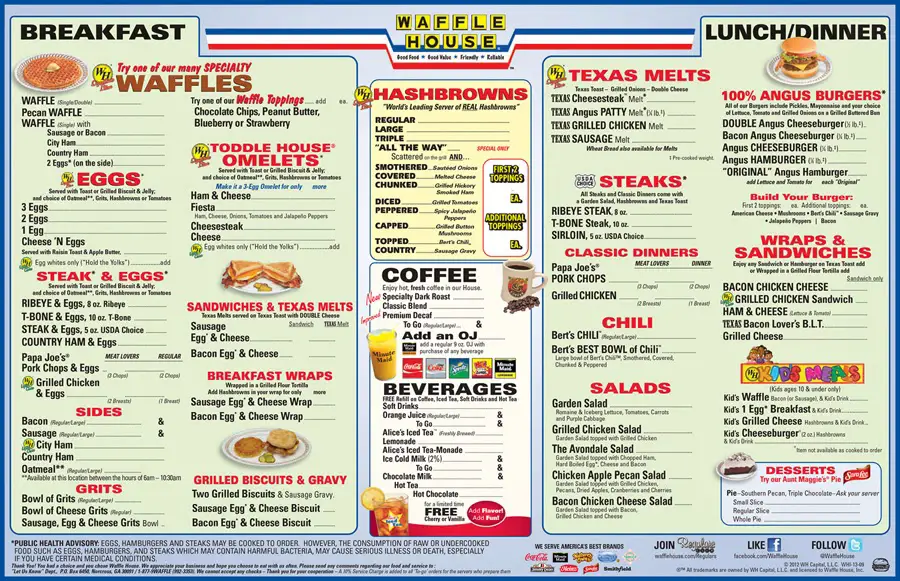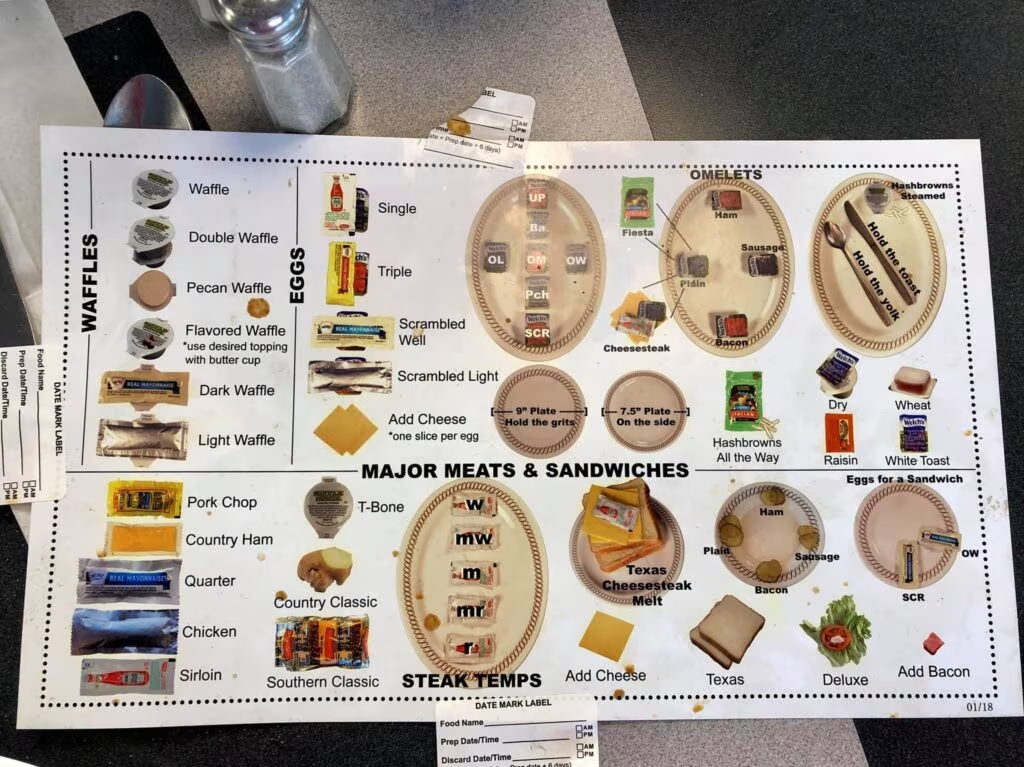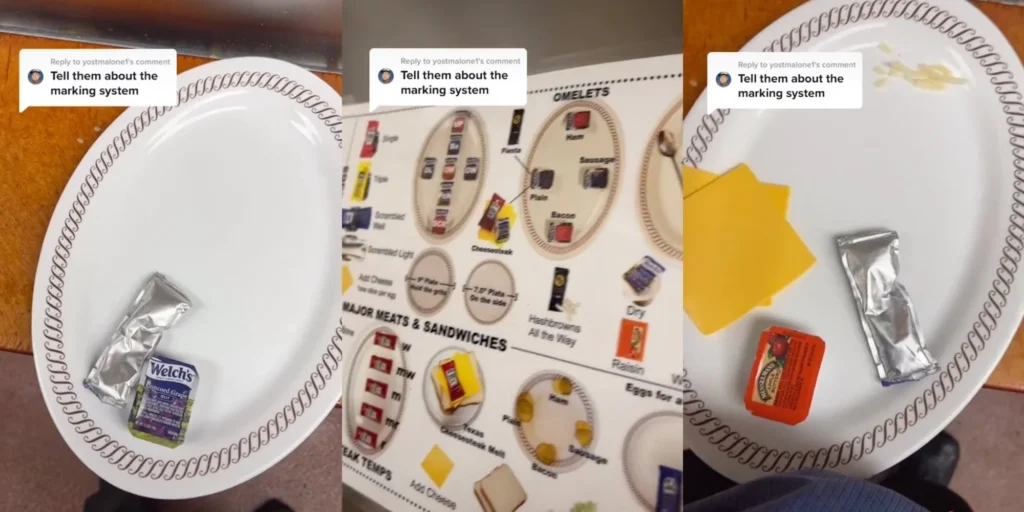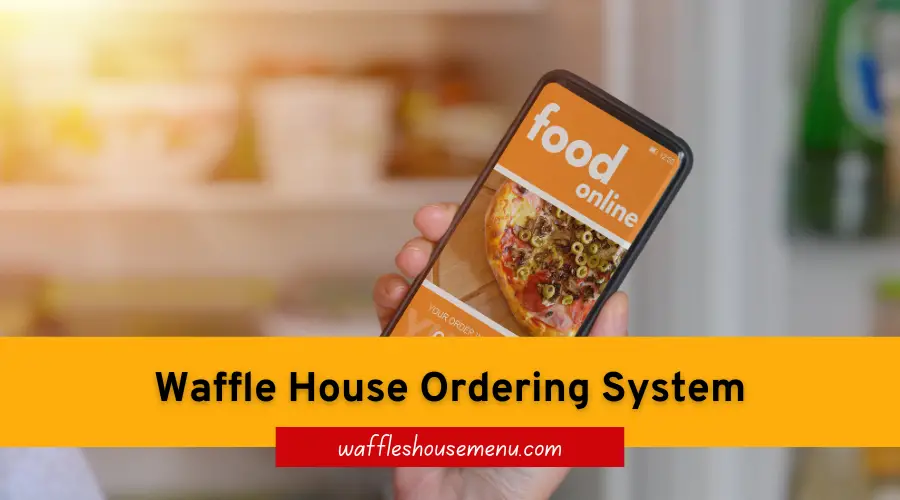Waffle House Ordering System: How It Works & Why It’s Fast
Waffle House, an American diner staple, is known for its 24/7 service, iconic breakfast options, and lightning-fast order fulfillment. Whether you’re stopping by for a late-night snack or an early morning meal, you might wonder:
How does Waffle House serve food so fast, even during rush hours?
The answer lies in their unique and highly efficient ordering system. Waffle House doesn’t rely on conventional handwritten tickets or digital screens. Instead, they use a verbal, visual, and memory-based ordering method that has been perfected over decades.
This article dives deep into how the Waffle House ordering system works, its benefits, training process, digital adaptations, and why it remains unmatched in the restaurant industry.

Understanding the Waffle House Ordering System
The Waffle House ordering system is designed to make communication between servers and cooks seamless. It is a combination of:
- Verbal Call-Outs – Servers verbally announce orders in a specific way.
- Plate Marking System – Unique placement of condiments and utensils helps cooks identify different orders.
- Pull-Drop-Mark Process – A three-step system that ensures food is cooked and served efficiently.
This ordering system reduces mistakes, speeds up service, and keeps operations running smoothly without digital interference.
Evolution of the Waffle House Ordering System

From Paper Tickets to Verbal Orders
Initially, like most diners, Waffle House relied on handwritten tickets. But as the chain grew and customer volume increased, this method proved inefficient.
To speed up operations and reduce human errors, the company eliminated paper tickets and developed a streamlined system based on verbal communication and visual plate marking.
How It Became an Industry Standard
The system was tested and refined across various locations, proving highly effective in handling high traffic, especially during peak hours. Today, every Waffle House employee is trained to follow this optimized process.
Components of the Waffle House Ordering System

A. Verbal Order Calling
Instead of writing down orders, servers call them out loudly and in a specific order so cooks can hear and process them instantly.
- Example: A classic order might be called as
“One scrambled, hold the toast, smothered hash browns!”- This means one scrambled egg, no toast, and hash browns with onions.
B. The Plate Marking System
A unique plate-marking technique is used to visually identify different orders.
- Servers place condiments, utensils, or napkins on the plate in a particular way, indicating how food should be prepared.
- Example:
- A ketchup packet on the plate might mean extra crispy bacon.
- A jelly packet near the rim may indicate no butter on toast.
This eliminates the need for paper slips and allows cooks to quickly glance at a plate and know exactly what needs to be cooked.
C. The Pull-Drop-Mark System
The three-step method Waffle House employees follow:
- Pull – The cook gathers ingredients needed for the order.
- Drop – Ingredients are placed on the grill at the right time.
- Mark – The plate is “marked” using condiments or utensils to indicate customizations.
This method keeps everything organized, synchronized, and flowing efficiently.
How Waffle House Cooks Manage Multiple Orders
Unlike traditional restaurants that use digital screens, Waffle House cooks rely on memory, verbal calls, and plate marking. Here’s how they handle a rush of orders efficiently:
- Grouping Orders – Similar items (e.g., scrambled eggs) are cooked together.
- Prioritizing Time-Sensitive Items – Cooks start longer-cooking items first.
- Using the Grill Strategically – Specific sections of the grill are designated for different foods.
- Immediate Order Assembly – As food is ready, it’s plated and handed directly to servers.
The result? Food is served in record time, even during peak hours.
Training Process for Waffle House Employees
Every Waffle House employee undergoes extensive training to master the ordering system.
- Step 1: Learning verbal order calling techniques.
- Step 2: Practicing the plate marking system to indicate customizations.
- Step 3: Understanding grill layout and timing for order preparation.
- Step 4: Real-time on-the-job training under supervision.
It typically takes weeks of practice before an employee fully masters the Pull-Drop-Mark method.
Benefits of the Waffle House Ordering System
Why is this system better than traditional restaurant ordering methods?
- Faster Service – Orders reach cooks instantly.
- Minimal Errors – The combination of verbal calls + visual plate marking ensures accuracy.
- Scalability – The system works even in high-traffic situations.
- No Dependency on Technology – Even if the power goes out, Waffle House can still serve food without interruptions.
This is why Waffle House has become one of the most efficient restaurant chains in the U.S.
Challenges & Criticism
Despite its effectiveness, the system does have some downsides:
- High Learning Curve – New employees may struggle initially.
- Memory-Based System – Mistakes can occur if cooks forget orders.
- Not Ideal for Large Custom Orders – The lack of digital tracking can make complex orders harder to manage.
However, constant training and experience help employees overcome these challenges.
The Future: Digital Ordering & Online Integration
With evolving technology, Waffle House has started adapting:
- Online Ordering: Customers can place orders via the official Waffle House Online Ordering System.
- Mobile App: The Waffle House app allows order customization and quick pickups.
- Delivery Services: Some locations now partner with delivery apps for convenience.
While the in-store system remains traditional, these digital additions provide more flexibility for customers.
Conclusion
The Waffle House ordering system is a perfect blend of simplicity, speed, and accuracy.
- The verbal ordering method ensures cooks receive orders immediately.
- The plate-marking system visually confirms order details.
- The Pull-Drop-Mark process keeps the kitchen running smoothly.
Despite advancements in digital technology, this old-school yet innovative system continues to outperform many modern restaurants.
